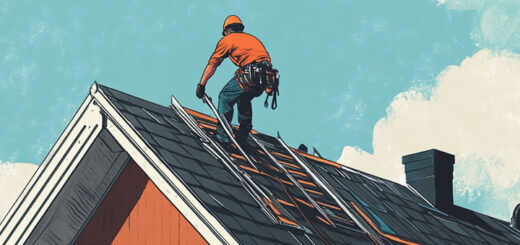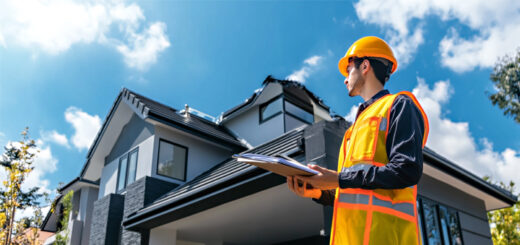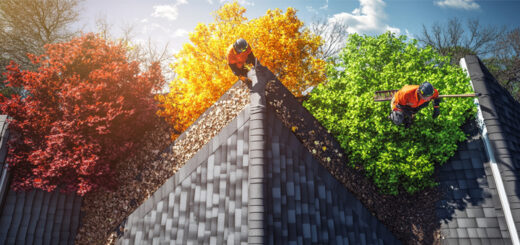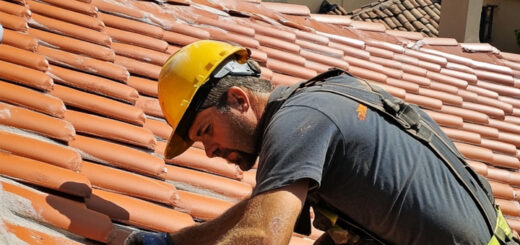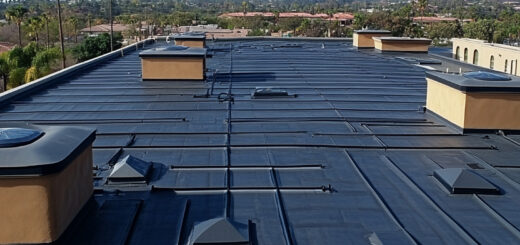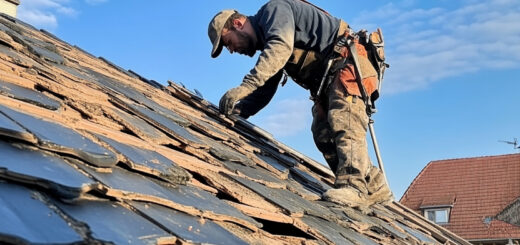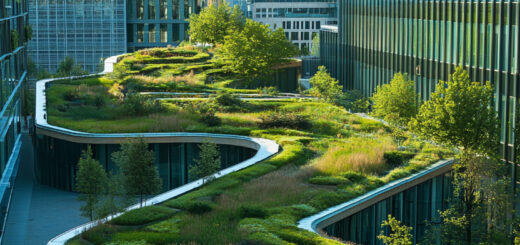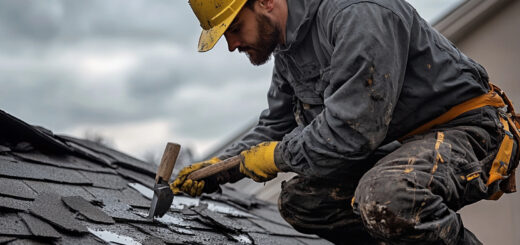The Evolution of Roofing in Austin’s Unique Climate
Austin’s unique climate has played a significant role in shaping the evolution of roofing practices in the area. The city’s weather patterns, characterized by hot summers, mild winters, and occasional severe storms, have presented distinct challenges for roofing professionals over the years.
Historically, Austin’s roofing solutions were primarily focused on heat resistance. As the city grew and technology advanced, roofing materials and techniques adapted to address the full spectrum of climate-specific issues. The intense Texas sun necessitated the development of highly reflective roofing materials to combat heat absorption and reduce energy costs.
One of the most significant Texas roofing challenges in Austin has been managing the impact of sudden, heavy rainstorms and the potential for hail damage. This led to innovations in water-resistant membranes and impact-resistant shingles, which have become staples in modern Austin roofing.
The city’s roofing history also reflects a shift towards sustainability. As environmental concerns grew, so did the demand for eco-friendly roofing options. Green roofs, solar tiles, and recycled materials have gained popularity, aligning with Austin’s progressive environmental stance while still addressing the practical needs imposed by the local climate.
Today, Austin’s roofing industry continues to evolve, with professionals constantly seeking new ways to balance durability, energy efficiency, and aesthetic appeal in the face of the city’s unique weather challenges.
Top Roofing Materials Gaining Popularity in Austin
Austin homeowners are increasingly seeking innovative roofing solutions that combine durability, energy efficiency, and aesthetic appeal. Metal roofing in Austin has gained significant traction due to its longevity and ability to withstand extreme weather conditions. Solar tiles are another emerging trend, allowing homeowners to harness renewable energy while maintaining a sleek roof appearance. Green roofs, which incorporate vegetation, are becoming popular for their environmental benefits and natural insulation properties. Cool roofs, designed to reflect more sunlight and absorb less heat, are an excellent choice for Austin’s hot climate. Synthetic slate offers the classic look of natural slate without the weight and maintenance concerns, making it an attractive option for many homeowners. As Austin continues to grow and evolve, these roofing materials are likely to play a crucial role in shaping the city’s residential landscape.
Energy-Efficient Roofing Solutions for Austin Homes
Energy-efficient roofing solutions have become increasingly popular among Austin homeowners seeking to reduce their carbon footprint and lower energy costs. Reflective roofing materials, such as cool metal roofs or specially coated shingles, can significantly decrease heat absorption, keeping homes cooler during scorching Texas summers. Insulated roofing systems provide an additional layer of protection, minimizing heat transfer and improving overall home energy performance.
Austin residents can take advantage of various energy rebates offered by the city for implementing eco-friendly roofing options. These incentives make the transition to energy-saving roofs more affordable and accessible. Homeowners can choose from a range of materials and designs that not only enhance energy efficiency but also complement Austin’s unique architectural styles.
By investing in energy-efficient roofing solutions, Austin homeowners can enjoy reduced utility bills, increased property value, and contribute to a more sustainable urban environment. As the city continues to prioritize green initiatives, adopting these roofing technologies aligns with Austin’s commitment to environmental stewardship and long-term energy conservation.
Austin’s Shift Towards Sustainable and Eco-Friendly Roofing
Austin’s roofing industry is experiencing a significant shift towards sustainable and eco-friendly practices. As environmental concerns grow, homeowners and businesses are increasingly opting for roofing solutions that minimize their carbon footprint and promote energy efficiency.
One of the key trends in sustainable roofing is the use of recycled roofing materials. These materials, often made from reclaimed metal, plastic, or rubber, reduce waste and conserve natural resources. Many Austin roofing contractors now offer these eco-friendly alternatives, which not only benefit the environment but also provide durability and cost-effectiveness.
Rainwater harvesting systems are gaining popularity as an integral part of sustainable roofing practices in Austin. These systems collect and store rainwater from rooftops, which can then be used for irrigation, reducing reliance on municipal water supplies. This practice not only conserves water but also helps manage stormwater runoff, a significant concern in urban areas.
Living roofs, also known as green roofs, are becoming increasingly common in Austin. These innovative roofing systems involve growing vegetation on rooftops, providing numerous benefits such as improved insulation, reduced urban heat island effect, and enhanced biodiversity. Living roofs in Austin are not only aesthetically pleasing but also contribute to better air quality and energy efficiency.
As Austin continues to prioritize sustainability, the adoption of these eco-friendly roofing practices is expected to grow. Homeowners and businesses alike are recognizing the long-term benefits of sustainable roofing, both for the environment and their bottom line.
Smart Roofing Technologies Emerging in Austin
Smart roofing technologies are revolutionizing the construction industry in Austin, offering homeowners and businesses innovative solutions for more efficient and durable roofs. Smart shingles, equipped with sensors and communication capabilities, can monitor temperature, moisture levels, and structural integrity in real-time. These advanced materials work in tandem with IoT roofing systems, creating a network of interconnected devices that provide comprehensive data on roof performance and potential issues.
Drone roof inspections have become increasingly popular in Austin, allowing for quick and accurate assessments of roof conditions without the need for manual inspections. These unmanned aerial vehicles can capture high-resolution images and thermal data, identifying problem areas that might be invisible to the naked eye.
AI in roof maintenance is another emerging trend, utilizing machine learning algorithms to analyze data collected from smart shingles and drone inspections. This technology can predict potential issues before they become major problems, enabling proactive maintenance and extending the lifespan of roofs.
As Austin continues to embrace smart city initiatives, these roofing technologies are poised to play a crucial role in creating more sustainable and resilient urban infrastructure.
Local Regulations and How They’re Shaping Austin’s Roofing Landscape
Austin’s roofing landscape is significantly influenced by a complex web of local regulations, building codes, and homeowner association (HOA) rules. Understanding these regulations is crucial for both homeowners and roofing contractors operating in the area.
Austin’s building codes are particularly stringent when it comes to roofing. The city requires all roofing projects to adhere to the International Residential Code (IRC) and local amendments. These codes dictate everything from acceptable materials to installation methods, ensuring safety and durability in Austin’s unique climate.
Roofing permits are another vital aspect of the local regulatory landscape. Most roofing projects in Austin require a permit, which involves submitting detailed plans and undergoing inspections. This process, while sometimes seen as cumbersome, helps maintain high standards across the city’s roofing industry.
HOA regulations add another layer of complexity. Many neighborhoods in Austin have specific rules regarding roof aesthetics, materials, and even color choices. Homeowners must navigate these regulations alongside city requirements when planning a roofing project.
On a positive note, Austin offers various roofing incentives to promote energy efficiency and sustainability. The city provides rebates for cool roofs and solar installations, encouraging homeowners to make environmentally friendly choices.
These local regulations, while sometimes challenging to navigate, play a crucial role in shaping Austin’s roofing landscape. They ensure quality, safety, and consistency while also promoting innovation and sustainability in the industry.
The Impact of Extreme Weather on Austin Roofing Choices
Extreme weather events have become increasingly common in Austin, prompting homeowners to reassess their roofing choices. Hail-resistant roofing has gained popularity, with materials like impact-resistant shingles and metal roofs offering superior protection against severe hailstorms. Wind-resistant materials, such as architectural shingles and properly secured metal panels, are also in high demand to withstand the strong gusts that often accompany Texas storms.
While Austin isn’t directly in hurricane territory, the city can experience the effects of these powerful storms. As a result, some homeowners are opting for hurricane-proof roofs, which incorporate advanced fastening systems and impact-resistant materials to withstand extreme wind and rain. Weatherproofing techniques, such as proper underlayment installation and enhanced flashing methods, are becoming standard practice to ensure roofs remain watertight during intense downpours.
Roofing professionals in Austin are adapting to these changing demands by offering a wider range of weather-resistant options and staying up-to-date with the latest installation techniques. As climate patterns continue to evolve, investing in a robust, weather-resistant roof is becoming less of a luxury and more of a necessity for Austin homeowners.
Aesthetic Trends in Austin Residential Roofing
Austin’s residential roofing landscape is evolving, embracing modern roof designs that complement the city’s unique architectural styles. Homeowners are increasingly opting for sleek, low-slope roofs that not only provide a contemporary look but also maximize energy efficiency. Color trends in roofing have shifted towards cooler tones, with shades of gray, slate blue, and even muted greens gaining popularity, reflecting Austin’s connection to nature and its vibrant urban culture.
Designer shingles are making a significant impact on the local roofing scene, offering a perfect blend of aesthetics and functionality. These high-end materials mimic the appearance of natural slate or wood shake while providing superior durability and weather resistance. Many Austin homeowners are choosing these premium options to enhance their home’s curb appeal and resale value.
Architectural styles in Austin continue to diversify, with a mix of traditional Hill Country designs and modern interpretations. Roofing choices are following suit, with materials like standing seam metal roofs becoming increasingly common in both contemporary and updated classic homes. These roofs not only offer a striking visual element but also align with Austin’s focus on sustainability and longevity.
Cost Analysis: Traditional vs. Trendy Roofing Options in Austin
When considering a roof replacement in Austin, homeowners are often faced with the decision between traditional and trendy roofing options. A thorough cost analysis is essential to make an informed choice that balances upfront expenses with long-term value.
Traditional roofing materials like asphalt shingles typically offer a lower initial cost, making them an attractive option for budget-conscious homeowners. However, modern alternatives such as metal roofing or solar tiles may provide better ROI over time due to their durability and energy-saving properties.
For instance, while a metal roof might cost 2-3 times more than asphalt shingles upfront, its lifespan can be twice as long, potentially offering significant savings in the long run. Similarly, solar tiles can offset energy costs, contributing to their value over time.
Austin homeowners should also consider local climate factors when evaluating roofing options. Materials that offer better heat reflection and insulation can lead to reduced cooling costs in Texas’ hot summers, further impacting the long-term value of their investment.
Financing options are available for those looking to invest in modern roofing solutions. Many local banks and roofing companies offer loans or payment plans specifically designed for home improvement projects, making trendy roofing options more accessible.
Ultimately, the best choice depends on individual circumstances, budget, and long-term goals. Consulting with a professional roofing contractor can provide personalized insights into the cost-benefit analysis of various roofing options for your Austin home.



